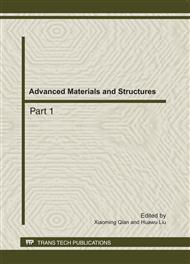p.1151
p.1155
p.1159
p.1163
p.1168
p.1174
p.1181
p.1186
p.1190
Influence of Mineral Admixtures on Chloride Threshold Value for the Corrosion of Steel Reinforcement
Abstract:
The influence of mineral admixtures on chloride threshold value was investigated by EIS method, MIP test and TG test, respectively. The experimental results showed that the chloride threshold value decreased with increasing the fly ash and slag content in composite cementitious. The increasing of fly ash and slag replacement resulted in the decreasing of porosity, average pore size and Ca(OH)2 content. The effect of mineral admixtures on the chloride threshold value was the comprehensive results of concrete pore structure and Ca(OH)2 content. The chloride threshold value decreased with decreasing the Ca(OH)2 content in concrete, and there was an approximate linear relationship between the logarithm of chloride threshold value and the logarithm of CCa(OH)2 content when the specimens exposed in tidal zone. The specimen exposed in tidal zone has a higher chloride threshold value than that exposed in splash zone was due to the lower dissolved oxygen around steels in concrete.
Info:
Periodical:
Pages:
1168-1173
Citation:
Online since:
September 2011
Authors:
Price:
Сopyright:
© 2011 Trans Tech Publications Ltd. All Rights Reserved
Share:
Citation:


